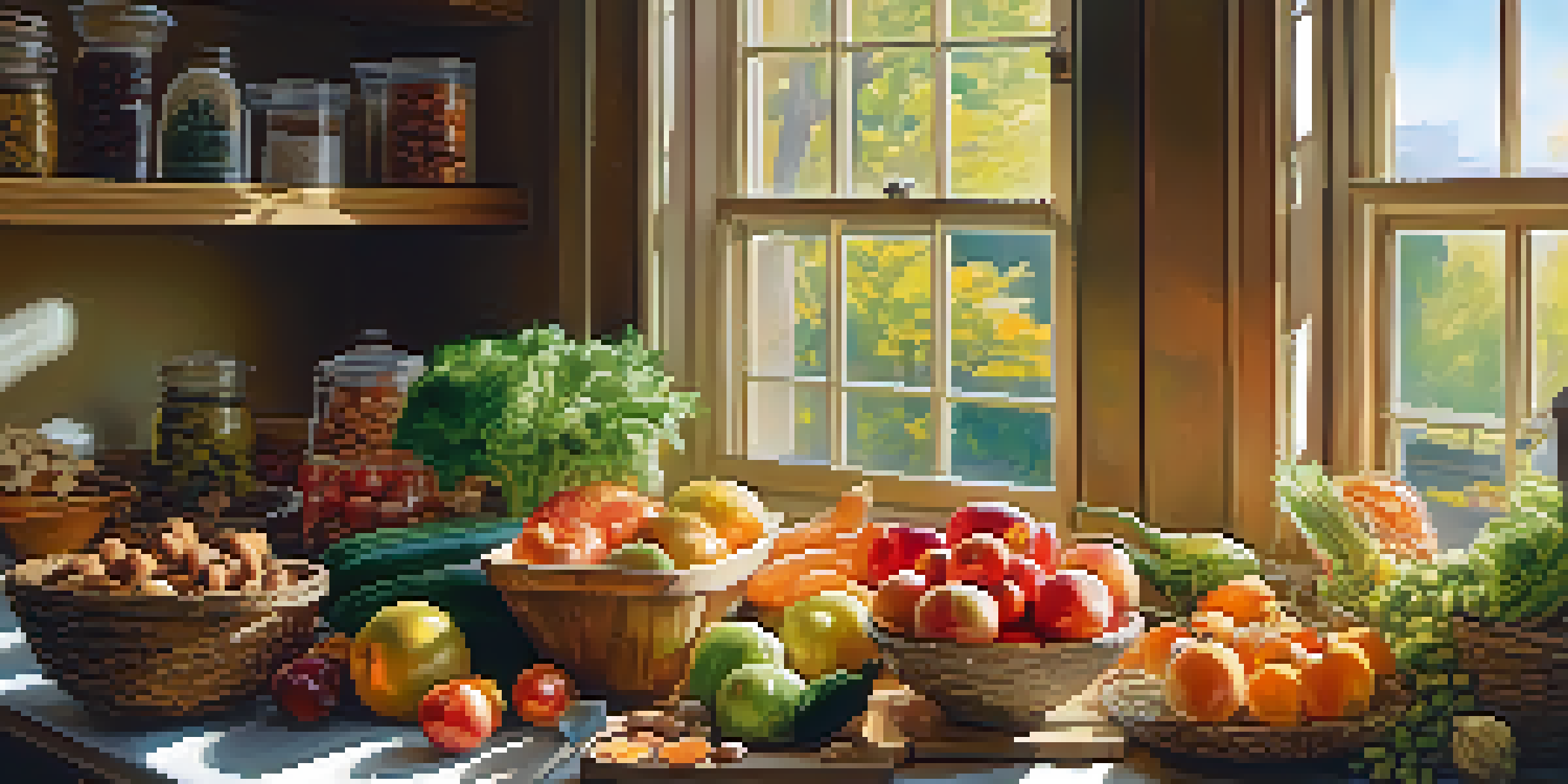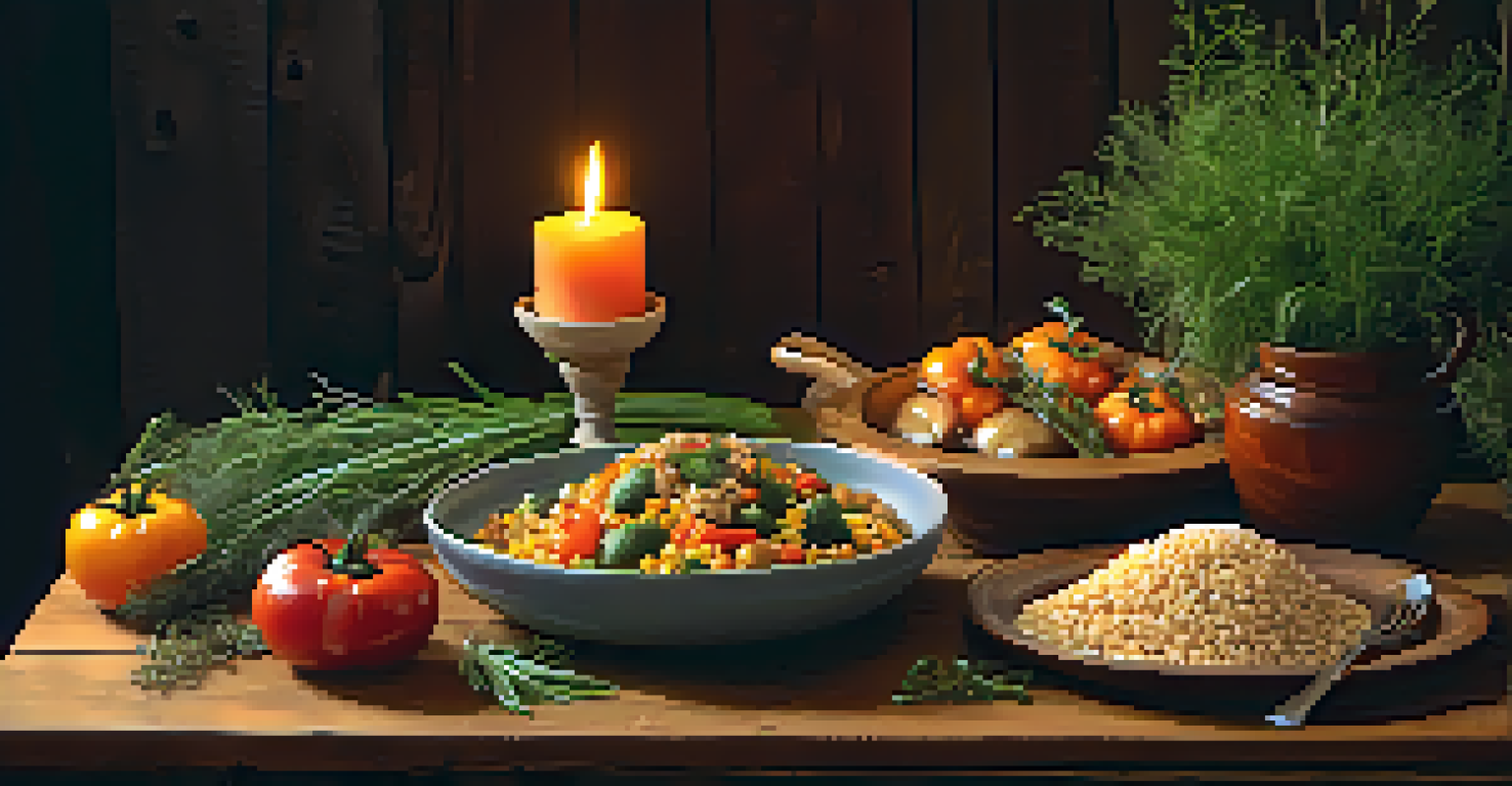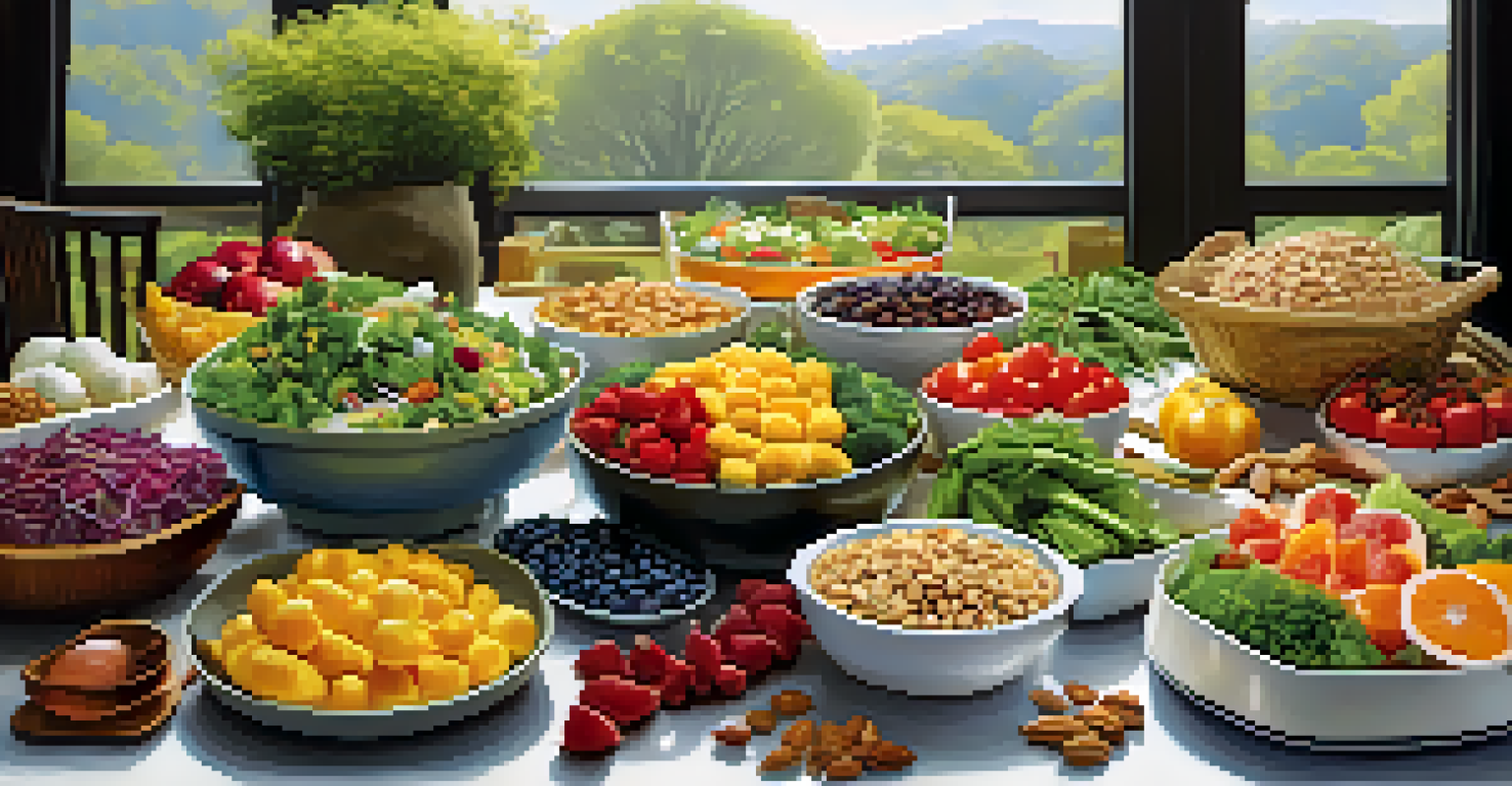Raw Foods vs. Cooked: Which is Better for Your Skin?

Understanding Raw Foods and Their Skin Benefits
Raw foods are those that haven't been cooked or processed, retaining their natural nutrients. These foods often include fruits, vegetables, nuts, and seeds. One of the primary benefits of raw foods is their high vitamin and enzyme content, which can enhance skin health.
Let food be thy medicine, and medicine be thy food.
Vitamins such as C and E, found in fresh fruits and vegetables, help combat oxidative stress, potentially reducing signs of aging. Furthermore, the enzymes in raw foods may aid digestion, leading to better nutrient absorption, which ultimately benefits the skin.
Incorporating raw foods into your diet can also improve hydration levels since many fruits and vegetables have high water content. This hydration can help keep your skin plump and radiant, proving that nature's bounty has much to offer.
The Power of Cooked Foods for Skin Nourishment
Cooked foods are often viewed as less nutritious, but cooking can enhance certain health benefits. For example, cooking tomatoes significantly increases the availability of lycopene, an antioxidant linked to protecting the skin from UV damage. This is a prime example of how heat can transform the nutritional profile of a food.

Additionally, cooked foods can be easier to digest for many people, which can lead to less bloating and discomfort. When our digestive system is functioning well, our skin often reflects this internal health, showing fewer breakouts and irritations.
Raw Foods Boost Skin Health
Consuming raw foods rich in vitamins and enzymes can enhance skin health and hydration.
Moreover, cooked foods can be comforting and satisfying, making it easier to maintain a balanced diet. This satisfaction can lead to better adherence to healthy eating habits, which ultimately supports skin health.
Nutrient Retention: Raw vs. Cooked Foods
One of the biggest debates between raw and cooked foods revolves around nutrient retention. Cooking can lead to the loss of some vitamins, particularly water-soluble ones like vitamin C and some B vitamins. However, other nutrients, such as beta-carotene in carrots, become more bioavailable when cooked.
The greatest wealth is health.
This means that while some nutrients diminish, others may actually become more beneficial after cooking. So, it’s essential to consider not just the nutrients lost, but also those that are enhanced through the cooking process.
A balanced approach may be the best way to ensure you’re getting all the necessary vitamins and minerals for skin health. Including a mix of both raw and cooked foods in your diet can provide a comprehensive range of nutrients.
Antioxidants: The Skin's Best Friends
Antioxidants play a crucial role in skin health, protecting against damage from free radicals. Both raw and cooked foods can provide antioxidants, but they do so in different ways. For instance, raw foods are often packed with vitamins that act as powerful antioxidants, like vitamin C in berries.
On the other hand, cooked foods can also deliver antioxidants, such as the aforementioned lycopene in tomatoes. This suggests that both raw and cooked foods can contribute to a robust antioxidant intake necessary for maintaining youthful skin.
Cooked Foods Enhance Nutrients
Cooking certain foods, like tomatoes, increases the availability of beneficial antioxidants that protect the skin.
Incorporating a variety of foods rich in antioxidants can create a protective barrier for your skin, making it essential to embrace both preparation methods in your diet.
Digestive Health and Its Impact on Skin
The connection between digestive health and skin condition is often underestimated. A healthy gut can lead to clearer skin, as it promotes proper nutrient absorption and toxin elimination. Raw foods, rich in fiber, can support digestive health by promoting regularity and feeding beneficial gut bacteria.
Conversely, cooked foods, especially those that are well-prepared and seasoned, can be easier to digest for some individuals. This ease can lead to fewer digestive issues, resulting in a healthier gut, which in turn can reflect positively on your skin.
Ultimately, finding a balance that works for your digestive system is key. Listening to your body can guide you in choosing the right mix of raw and cooked foods for optimal skin health.
Personal Preferences: Taste and Texture
Taste and texture play a significant role in our food choices and can affect dietary adherence. Some people naturally gravitate towards crunchy raw vegetables, while others prefer the warmth and comfort of cooked dishes. Finding joy in what you eat is crucial for maintaining a healthy lifestyle.
Cooking can enhance flavors and make certain foods more palatable, which can encourage people to eat a wider variety of foods. This variety is important for ensuring a well-rounded intake of nutrients necessary for skin health.
Balance is Key for Skin Care
A balanced diet incorporating both raw and cooked foods maximizes nutrient intake for optimal skin health.
Ultimately, the best approach is to enjoy both raw and cooked foods, allowing your taste preferences to guide you while still considering the nutritional benefits each can offer.
Conclusion: Striking the Right Balance for Skin Health
In the battle of raw foods versus cooked foods, the winner may be a balanced approach. Both methods offer unique benefits that can significantly impact skin health, from nutrient retention to digestive support. By combining raw and cooked foods in your diet, you can maximize your nutrient intake.
Listening to your body and paying attention to how different foods affect your skin can help inform your choices. If you notice certain foods make your skin glow or reduce breakouts, lean into those preferences.

Ultimately, embracing a diverse diet that includes both raw and cooked foods can provide the best of both worlds, leading to healthier, happier skin.